I first met Craig Camp at a wine conference a few years ago. We follow each other on social media, but he really got my attention this past April with his post: ‘Leaving Forward.’
Craig Camp, late of Cornerstone Cellars in Sonoma, was ‘running towards’ Troon Vineyard in Southern Oregon’s Applegate Valley AVA. Intrigued, I reached out. Why did he leave Wine Country? Why Troon Vineyard? Why Southern Oregon? Would he be willing to share his story?
Indeed. Here, Craig Camp and Troon Vineyard’s irrepressible wine maker Steve Hall recount their respective ‘leaps of faith’ from Napa Valley to Oregon. Fears, tears, and bliss included.
“I am not running away from the Napa Valley, which is a beautiful place, but I am very truly running towards something.” – Craig Camp, Troon Vineyards
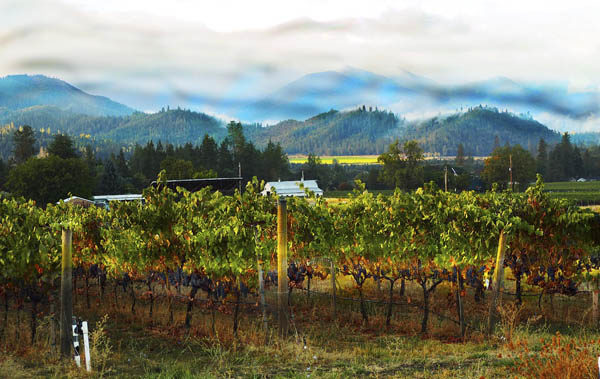
LM Archer: You both enjoyed prestigious wine careers in Napa and Sonoma before choosing to ‘run towards’ Troon Vineyards in Southern Oregon’s Applegate Valley. Share with readers how you each arrived at your respective ‘leaps of faith’ from the safety and security of California’s Wine Country to Southern Oregon’s somewhat obscure Applegate Valley?
Craig Camp: There was a vineyard on Howell Mountain that we had been buying Cabernet from at over $10,000 a ton. The vineyard was sold and the new owner told me the new price would be $21,000 a ton. It was kind of the “straw that broke the camel’s back” event. What fun is that? You can’t take risks with fruit that costs that much so you’re doomed to making a safe Napa Valley style. In the Applegate Valley we can take risks and can push forward in making really exciting wines with a real edge to them. Actually Applegate Valley is not that obscure anymore and we get thousands of tourists a year visiting us at Troon Vineyard.
Steve Hall: I had been looking for a chance to work in Sonoma or Paso Robles, and when the job listing came up, I saw that Vermentino was planted on the property. Too good to pass up. And it got me out of the Napa Wine Scene.
LMA: Troon Vineyards originated in 1972 as a labor of love by ‘displaced Scotsman’ and former cattle rancher Dick Troon. Do you have any stories you can share with readers about the obstacles he faced at the outset, and how he overcame them?
Craig: The biggest obstacles that Dick Troon faced when he planted his first vineyard here in 1972 was simply the he had to create everything himself from scratch. At that time there was only one winery buying grapes in Southern Oregon and they didn’t want to buy his fruit. So he got in contact with people at Davis (ed. note: the wine university in California) that gave him long-distance help and he started to make his own wine. Many of those first vines did not make it past the first year, but he was persistent and kept planting and learning.
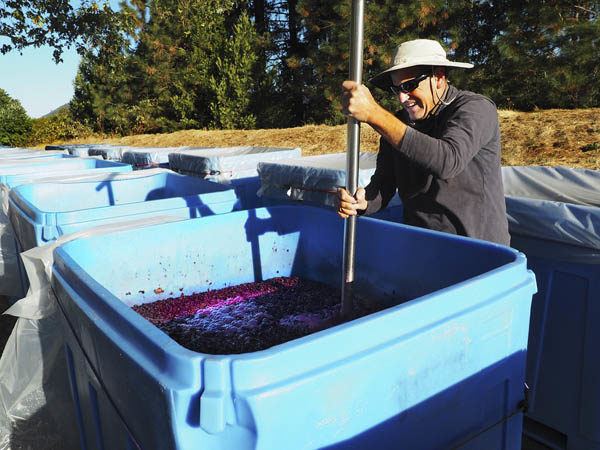
LMA: Talk about how current owner Larry Martin, who bought Troon Vineyards in 2003 from his friend Dick Troon, influences the winery’s success today.
(Note: The Troon Vineyard website describes owner Larry Martin as follows: “A third or fourth generation Oregonian (depending on whom one believes) and graduate from Oregon State University, Mr. Martin was a stand in for Sean Connery in the early Bond movies before saving civilization while a secret agent. During one of his assignments in France investigating a counterfeit wine case, Larry became a wine aficionado; spending the next 40 years as a collector of fine wines. Now he spreads his time between being the proprietor of Troon Vineyard and writing fiction.”)
Craig: If it had not been for Larry’s vision we would not have all this beautiful mature Vermentino, Tannat, Malbec and Syrah to work with. It was a real risk to plant these varieties, but that risk has paid off as these are clearly the great varieties of the Applegate Valley.
LMA: Troon Vineyards boasts an array of warm-weather varietals, many from Tablas Creek Nursery. Cultivars include Marsanne, Roussanne, Sauvignon Blanc, Viognier, Vermentino, Cabernet Sauvignon, Sangiovese, Malbec, Syrah, Tannat, Tempranillo, and Dick Troon’s Old Vine Zinfandel, planted in 1972. You both contend that Applegate Valley wine region resembles other areas known for their blends like Chateauneuf du Pape and Champagne. What about Applegate Valley blends?
Craig: If you think about it most regions are better off blending. Burgundy and Barolo are exceptions and blended wines like Bordeaux, Rioja, Champagne and so on are more the norm. We are not so focused on blends, but more on co-ferments, which add far more complexity and texture than simple blending. I believe the vines that thrive here are the classic Mediterranean varieties and, more often than not, they are also parts of co-ferments in France and Italy. We blend for the same reason they do, we feel it makes more interesting wines. We’re not against mono-varietal wines though and make several of them every vintage.
Steve: Our wines are more like blends from Languedoc-Roussillon, Priorat, Rhone, Sardinia even. The strength of the blends and especially the co-ferments of whites like Marsanne and Viognier, Vermentino and Sauvignon Blanc and reds Zinfandel and Tempranillo, only comes about when the individual varieties really add to each other. The granitic soils around here tend to underplay the aromas and textures, so you have to work harder in the vineyard to draw out thicker skins to build up the tannins and aromatics. Another idea is to make a co-ferment, or later a blend, to combine strengths and minimize the weaknesses. This part of Oregon has the opportunity to invent new wines with new textures and aromas, why not work a bit more to get there?
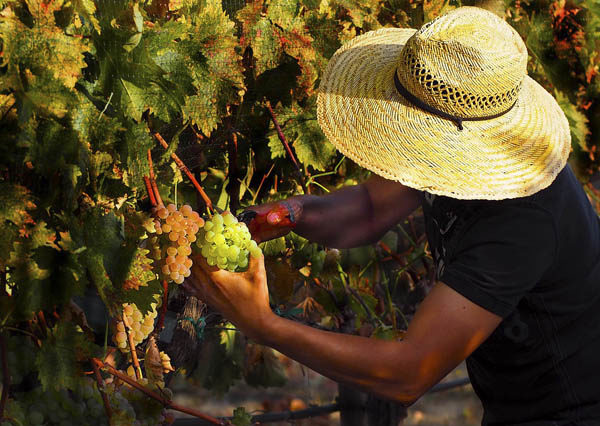
LMA: As LIVE and Salmon Certified vineyards, how do your harvest methods differ from other vineyards in the area? Anything you notice about the fruit that makes the extra work worthwhile?
Craig: It’s no secret anymore that vines farmed with low input methods make better wine grapes. I think LIVE is a good start for us, but we want to take it farther. I don’t think we’re very interested in other certifications as we would prefer to take the parts of biodynamics and organics we think best and just continue to reduce vineyard inputs at every opportunity. Personally I feel more comfortable with many of the ideas of Masanobu Fukuoka rather than some of the more questionable aspects of biodynamics. It’s hard for me to totally ignore science.
Steve: Most vineyards around here are tending toward sustainable, low impact viticulture. The LIVE program makes you a better farmer, neighbor and employer, if you follow the spirit not just the letter of the guidelines.
(Ed. note: There are some significant difference between the US and the European versions of the definitions of “organic wine”.)
LMA: Troon Vineyards employs minimalistic, old-world approaches to wine making, including natural yeast ferments, manual ‘treading’, use of neutral French oak, lees aging, and batonnage. Anything else that you’ve incorporated into your production methods that excites you?
Craig: It’s more the things we don’t incorporate that excite me. For me winemaking is not thinking what you can do, but just doing what you have to do.
Steve: The biggest contribution I brought to Troon was the concept of co-fermentation, not for just specific goals of balancing the highs and lows of individual varieties and vineyards, but because of the deeper philosophy of an old Italian field blend, grown and harvested together, integral, with deeper structures and that lovely, compelling complexity of aromatics. This works pretty well, because of all the other parts, including our people getting the bottles out of the winery and opened on a table.
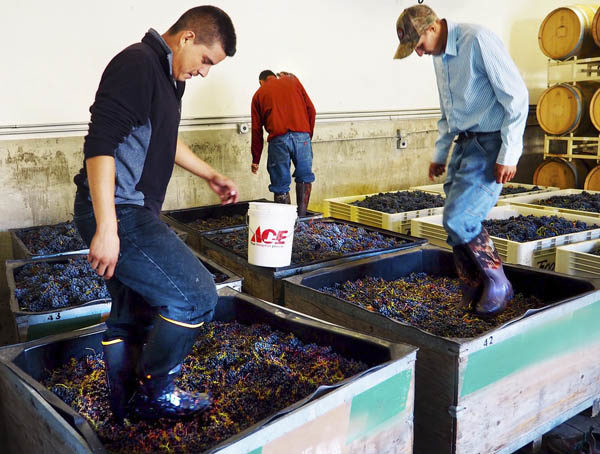
LMA: Talk about terroir. Applegate Valley lies in the shadow of the Siskiyous. Soils are primarily granitic. Western winds from Gold Beach pass through a gap that cools the vineyards. Is it fair to compare this dynamic to the Petaluma Gap in Carneros? Also, can you speak to elevation(s), aspect(s) and soil variations at Troon. With all that granite, any plans to plant Gamay?
Craig: The Applegate Valley is warmer than Carneros, with no fog and bigger diurnal shifts. Also our daylight hours are much longer than Carneros at the height of summer. We’re not Pinot country at all, but resemble areas like Sardegna (Sardinia) or Languedoc more than Carneros. Elevation plays a big part and during bud break you can still see snow on the mountains around us, sometimes just a few hundred yards from the vineyard. Planting Gamay is on my radar as is Fiano, Greco, Picpoul and Aglianico and certainly more Roussanne, Tannat, Mourvèdre and Malbec, which all excel here.
Steve: Terroir around here is pretty compelling, the mix of oaks, madrones, pines and firs, the afternoon wind racing up from the Pacific, the steep Siskiyous mountains and gentle valleys, the growing season compressed between late February / early March snow fall and frosts in October, and then the rains… The length of sunlight and the purity of the water, the soil microflora and all that mix of microbial life blowing around here and there, and exceptionally low humidity from the desert just a few mountain ridges away. It is probably more like the Templeton Gap and the south end of the Santa Lucia Highlands or the Northern Santa Lucia Highlands by Gonzales just near Salinas. Thinking of Fiano and Greco, and more Tannat.

LMA: Anything else you’d care to share with readers about Troon Vineyards and/or the Applegate Valley wine region?
Craig: Besides the excitement of an emerging fine wine region, the Applegate Valley is one of the most visually beautiful wine regions I’ve seen anywhere.
Steve: Applegate has a mix of people that seems like a bit of old Santa Clara and Berkeley got together with Missouri. I start my day with two cups of coffee from Rogue Roasters in Grants Pass, as good as the Peet’s coffee on Walnut Square, when I schlepped there from campus during my mis-spent youth.
LMA: Finally, if your experience as a winemaker in Applegate Valley has taught you anything, it’s taught you…?
Craig: It’s more exhilarating to be a pioneer than to work in an established region. We can really go where our hearts take us.
Steve: When I got here in February, 2014 between the snowstorms, I thought I had a 50 / 50 chance of pulling off all we have accomplished the past 2 1/2 years. It would not have been possible without the help of everyone, co-workers, colleagues, neighbors living out here, family and friends … and especially my colleagues in western Sonoma during my term as a harvest worker in 2013 for Verse and Ryme, Pax, Jolie Laide, Sean Thackrey, Brooks Note, and Kurt Beitler of Boheme. They showed how little technology is needed to make great wines.
More on Troon Vineyards here.
LM Archer is a freelance writer based in Seattle and California. She is Francophile who considers wine an art and Burgundy the centre of the universe. She is the founder and editor of binNotes | redThread.


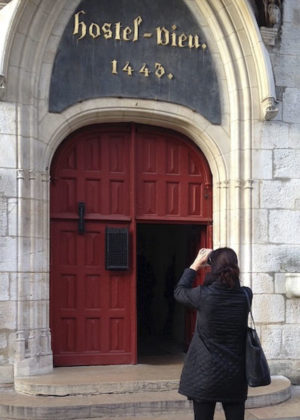








2 Responses
Great piece! Enjoyed reading this insight on some impressive wine.
[…] BK Wine Magazine […]